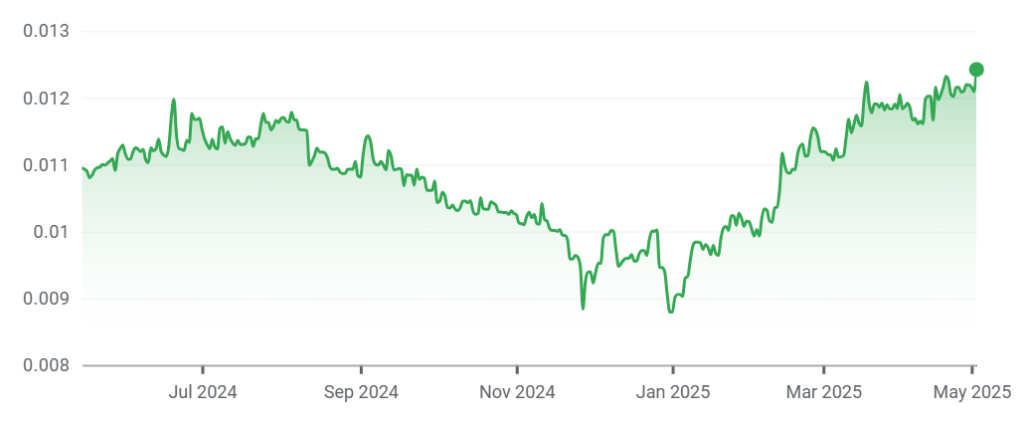A Russian economist said that the digital currency of the country’s central bank, the digital ruble, cannot take place nationally before 2027.
Digital friction was to be launched on July 1, 2025. But earlier this year, the central bank suddenly postponed the “indefinitely” launch, not giving an alternative launching calendar.
Deployment of digital ruble: Russians wait until 2027 for CBDC?
According to the Russian newspaper belonging to the State, Ria Novosti, Alexey Voylukov, professor of commercial practice of MBA in digital finance at the Moscow Presidential Academy, said that the central bank will have to provide incentives if they wanted people to use its room.
Voylukov also said that in the most optimistic scenarios, ordinary Russians could start paying in stores with the digital ruble in the second half of 2026.
However, he said that a national deployment in 2027 was “a more realistic scenario”.
Voylukov’s comments came after the complaints contrary to the Ministry of Finance last month. The ministry said that digital friction was “almost ready” for a national launch.
Earlier, Interfax reported that Russian Minister Anton Soluanov said the digital ruble will be launched next year. The Minister said:
“Last year and the previous year, we carried out several transactions, including budget transactions, using digital ruble. The digital ruble is 100% reliable. “
Siluanov said Moscow would focus on using the token in the commercial banking sector for the rest of 2025.
About fifteen large banks, including Sberbank and T-Bank (formerly Tinkoff Bank), are currently testing the token.
However, while the governor of the central bank Elvira Nabiullina continued to defend the CBDC, the banking sector expressed serious doubts.

The Russians were still not sure of rubbing digital
Citizens have also expressed their reluctance about the medal, bringing the central bank to respond with insurance that “no one will be forced” to use the CBDC.
But the future of digital ruble was questioned at the end of February when Nabiullina announced a “delay”.
Voylukov also considered that most Russians are still wary of CBDC. He said:
“First, the digital ruble provides no tangible advantage compared to existing means of payment. Second, he uses QR codes. This type of technology requires stable cellular networks and internet connections. This makes payment less practical and slower compared to ordinary bank cards. ”

Connectivity problems?
About 88% of Russian households have internet access, for 2023 data. However, although this figure is much higher in urban areas, some believe that it can reach 83% in rural regions of the country.
The Central Bank of China has tried to bypass similar connectivity problems by launching offline digital yuan wallets.
Russia has not yet pilot similar solutions, but can seek in Beijing for inspiration, because the two nations are looking for more means to collaborate in the financial sphere.
Voylukov concluded that it was “very likely” that the digital ruble “would interest people who are already used” to use QR codes and similar solutions to make payments. He said:
“The success or failure of mass adoption will depend on the advantages that the central bank and commercial banks working with digital friction can offer people.”
The post-Russian economist: the deployment of the digital ruble can be postponed until 2027 appeared first on Cryptonews.





 The power outages through Spain and Portugal are bad news for the digital currencies of the central bank and the stalls … but good news for species
The power outages through Spain and Portugal are bad news for the digital currencies of the central bank and the stalls … but good news for species